Showing Spotlights 233 - 240 of 336 in category All (newest first):
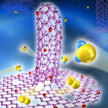 Renewable and high-capacity energy systems like fuel cells and metal-air batteries are key components in any scenario on future energy systems free of fossil fuels. The performance of fuel cells largely depends on the oxygen reduction reaction - the process that breaks the bonds of the oxygen molecules - which is substantially affected by the activity of the cathode catalyst. Researchers have now demonstrated the synthesis of a novel N-doped graphene/single-walled carbon nanotube hybrid material by a facile and cost-favorable one-step CVD method.
Renewable and high-capacity energy systems like fuel cells and metal-air batteries are key components in any scenario on future energy systems free of fossil fuels. The performance of fuel cells largely depends on the oxygen reduction reaction - the process that breaks the bonds of the oxygen molecules - which is substantially affected by the activity of the cathode catalyst. Researchers have now demonstrated the synthesis of a novel N-doped graphene/single-walled carbon nanotube hybrid material by a facile and cost-favorable one-step CVD method.
Jun 9th, 2014
 Over the past few years, researchers have developed numerous methods for synthesizing graphene. The synthesis of high-quality graphene is usually prepared by a complex and costly process - epitaxial growth on transition metal surfaces via chemical vapor deposition using high-purity hydrocarbons as precursors. In new work, researchers demonstrate graphene synthesis by liquid precursor deposition, a process that may give access to a wider range of substrate materials for graphene growth.
Over the past few years, researchers have developed numerous methods for synthesizing graphene. The synthesis of high-quality graphene is usually prepared by a complex and costly process - epitaxial growth on transition metal surfaces via chemical vapor deposition using high-purity hydrocarbons as precursors. In new work, researchers demonstrate graphene synthesis by liquid precursor deposition, a process that may give access to a wider range of substrate materials for graphene growth.
May 28th, 2014
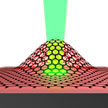 Most nanomotors designs are powered by quantum or, in most cases, catalytic chemical processes, the nanoscale equivalent of conventional internal heat engines that are so prevalent in our daily life has been missing. Researchers have now suggested a new type of ultrathin graphene engine which mimics an internal combustion engine system. This graphene engine consists of only a few parts - functionalized graphene, laser light, and substrate, which would make it simple to work with.
Most nanomotors designs are powered by quantum or, in most cases, catalytic chemical processes, the nanoscale equivalent of conventional internal heat engines that are so prevalent in our daily life has been missing. Researchers have now suggested a new type of ultrathin graphene engine which mimics an internal combustion engine system. This graphene engine consists of only a few parts - functionalized graphene, laser light, and substrate, which would make it simple to work with.
May 16th, 2014
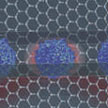 The nanotechnology-enabled detection of a change in individual cells, for instance cell surface charge, presents a new alternative and complementary method for disease detection and diagnosis. Since diseased cells, such as cancer cells, frequently carry information that distinguishes them from normal cells, accurate probing of these cells is critical for early detection of a disease. For this purpose, researchers have now designed a graphene-based optical refractive index sensor.
The nanotechnology-enabled detection of a change in individual cells, for instance cell surface charge, presents a new alternative and complementary method for disease detection and diagnosis. Since diseased cells, such as cancer cells, frequently carry information that distinguishes them from normal cells, accurate probing of these cells is critical for early detection of a disease. For this purpose, researchers have now designed a graphene-based optical refractive index sensor.
May 15th, 2014
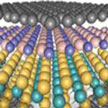 Much hope (and hype) rides on graphene as a 'post-silicon' material for fabricating next-generation nanoelectronic devices. However, graphene's Achilles heel is its lack of an energy band gap. Therefore, graphene must be modified to produce a band gap, if it is to be used in electronic devices. Using a new approach, researchers now have demonstrated the operation of an all two-dimensional transistor, using a transition metal dichalcogenides channel material, hexagonal boron nitride gate dielectric, and graphene source/drain and gate contacts.
Much hope (and hype) rides on graphene as a 'post-silicon' material for fabricating next-generation nanoelectronic devices. However, graphene's Achilles heel is its lack of an energy band gap. Therefore, graphene must be modified to produce a band gap, if it is to be used in electronic devices. Using a new approach, researchers now have demonstrated the operation of an all two-dimensional transistor, using a transition metal dichalcogenides channel material, hexagonal boron nitride gate dielectric, and graphene source/drain and gate contacts.
May 13th, 2014
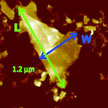 The way graphene sheets are produced in solution, by exfoliation, is an original process, still not completely understood. The exfoliation of a 2D object from a 3D bulk material is a process spanning from the nano- to meso-scale due to bubble cavitation, intercalation and disruptive fragmentation. When characterizing these 2D sheet solutions, their average size and size standard deviation are commonly reported, often assuming that their size follows a 'normal' distribution. Experimental data shows that this is not the case.
The way graphene sheets are produced in solution, by exfoliation, is an original process, still not completely understood. The exfoliation of a 2D object from a 3D bulk material is a process spanning from the nano- to meso-scale due to bubble cavitation, intercalation and disruptive fragmentation. When characterizing these 2D sheet solutions, their average size and size standard deviation are commonly reported, often assuming that their size follows a 'normal' distribution. Experimental data shows that this is not the case.
May 8th, 2014
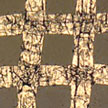 Graphene's piezoresistive effect, combined with its other properties such as ultra-translucency, superior mechanical flexibility and stability, high restorability, and carrier mobility, enables the use of graphene in high-sensitivity strain sensors. Potential application areas for these sensors could be found in flexible display technology, robotics, smart clothing, electronic skin, in vitro diagnostics, implantable devices, and human physiological motion detection - which has been considered as an effective approach to evaluate human health. To demonstrate this application, researchers have now reported on a method to monitor human motions.
Graphene's piezoresistive effect, combined with its other properties such as ultra-translucency, superior mechanical flexibility and stability, high restorability, and carrier mobility, enables the use of graphene in high-sensitivity strain sensors. Potential application areas for these sensors could be found in flexible display technology, robotics, smart clothing, electronic skin, in vitro diagnostics, implantable devices, and human physiological motion detection - which has been considered as an effective approach to evaluate human health. To demonstrate this application, researchers have now reported on a method to monitor human motions.
Apr 30th, 2014
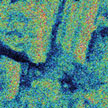 Researchers have proposed an alternative way of making graphene from rice husk. This research, using an ordinary synthetic apparatus and abundant agricultural waste, suggest that low cost graphene materials could now be easily and cheaply synthesized on an industrial scale. Due to its abundance, risk husk has already received much attention as a starting material in generating high-value-added materials such as silica and porous carbon.
Researchers have proposed an alternative way of making graphene from rice husk. This research, using an ordinary synthetic apparatus and abundant agricultural waste, suggest that low cost graphene materials could now be easily and cheaply synthesized on an industrial scale. Due to its abundance, risk husk has already received much attention as a starting material in generating high-value-added materials such as silica and porous carbon.
Apr 7th, 2014
 Renewable and high-capacity energy systems like fuel cells and metal-air batteries are key components in any scenario on future energy systems free of fossil fuels. The performance of fuel cells largely depends on the oxygen reduction reaction - the process that breaks the bonds of the oxygen molecules - which is substantially affected by the activity of the cathode catalyst. Researchers have now demonstrated the synthesis of a novel N-doped graphene/single-walled carbon nanotube hybrid material by a facile and cost-favorable one-step CVD method.
Renewable and high-capacity energy systems like fuel cells and metal-air batteries are key components in any scenario on future energy systems free of fossil fuels. The performance of fuel cells largely depends on the oxygen reduction reaction - the process that breaks the bonds of the oxygen molecules - which is substantially affected by the activity of the cathode catalyst. Researchers have now demonstrated the synthesis of a novel N-doped graphene/single-walled carbon nanotube hybrid material by a facile and cost-favorable one-step CVD method.
 Subscribe to our Nanotechnology Spotlight feed
Subscribe to our Nanotechnology Spotlight feed





